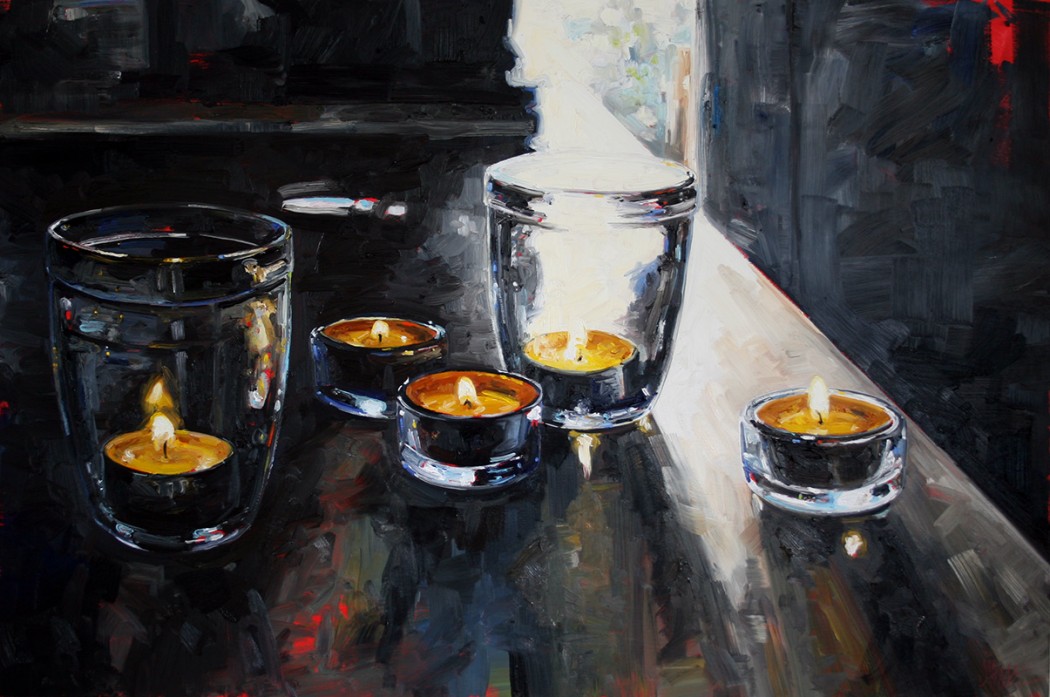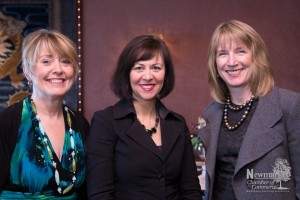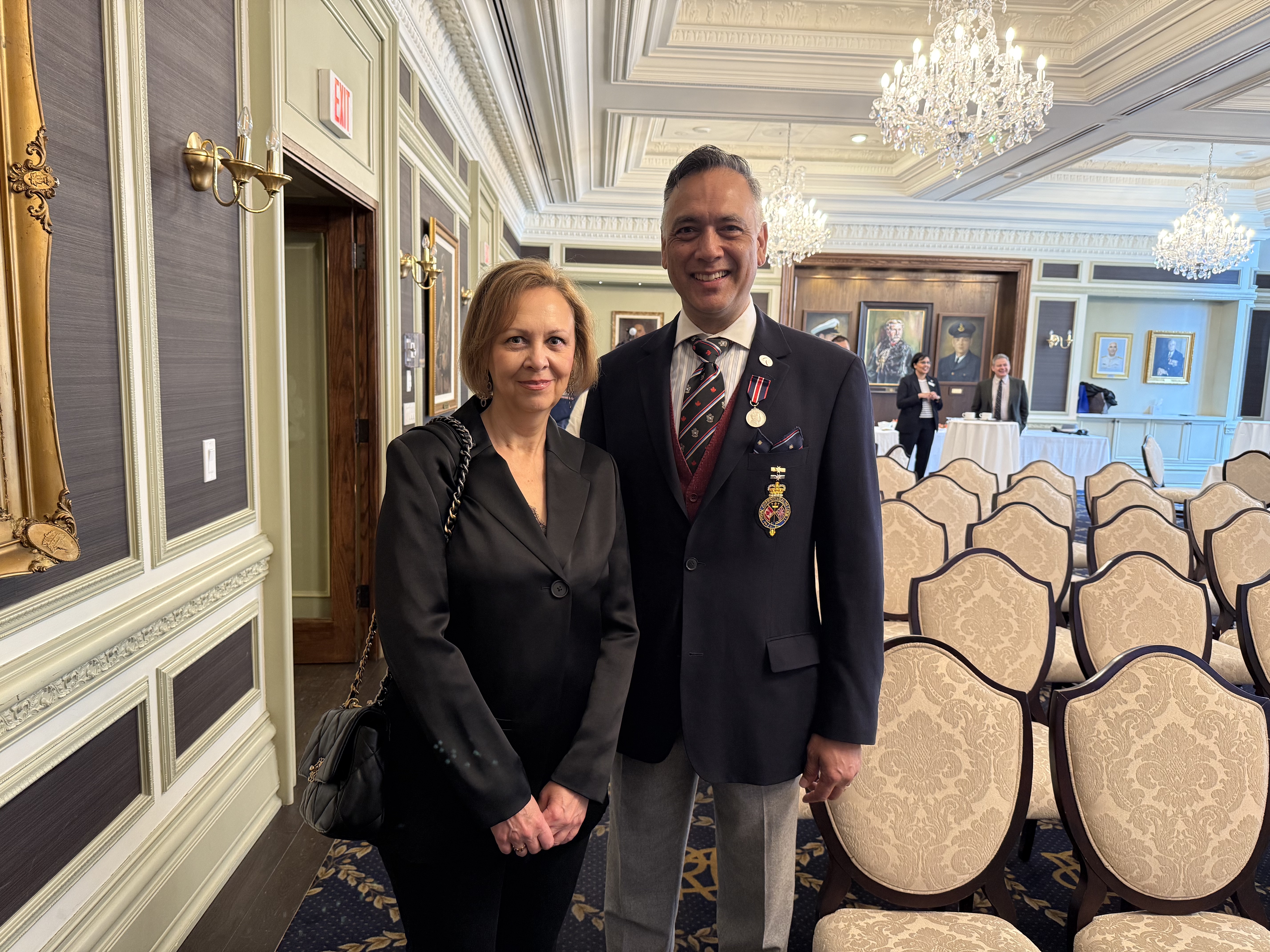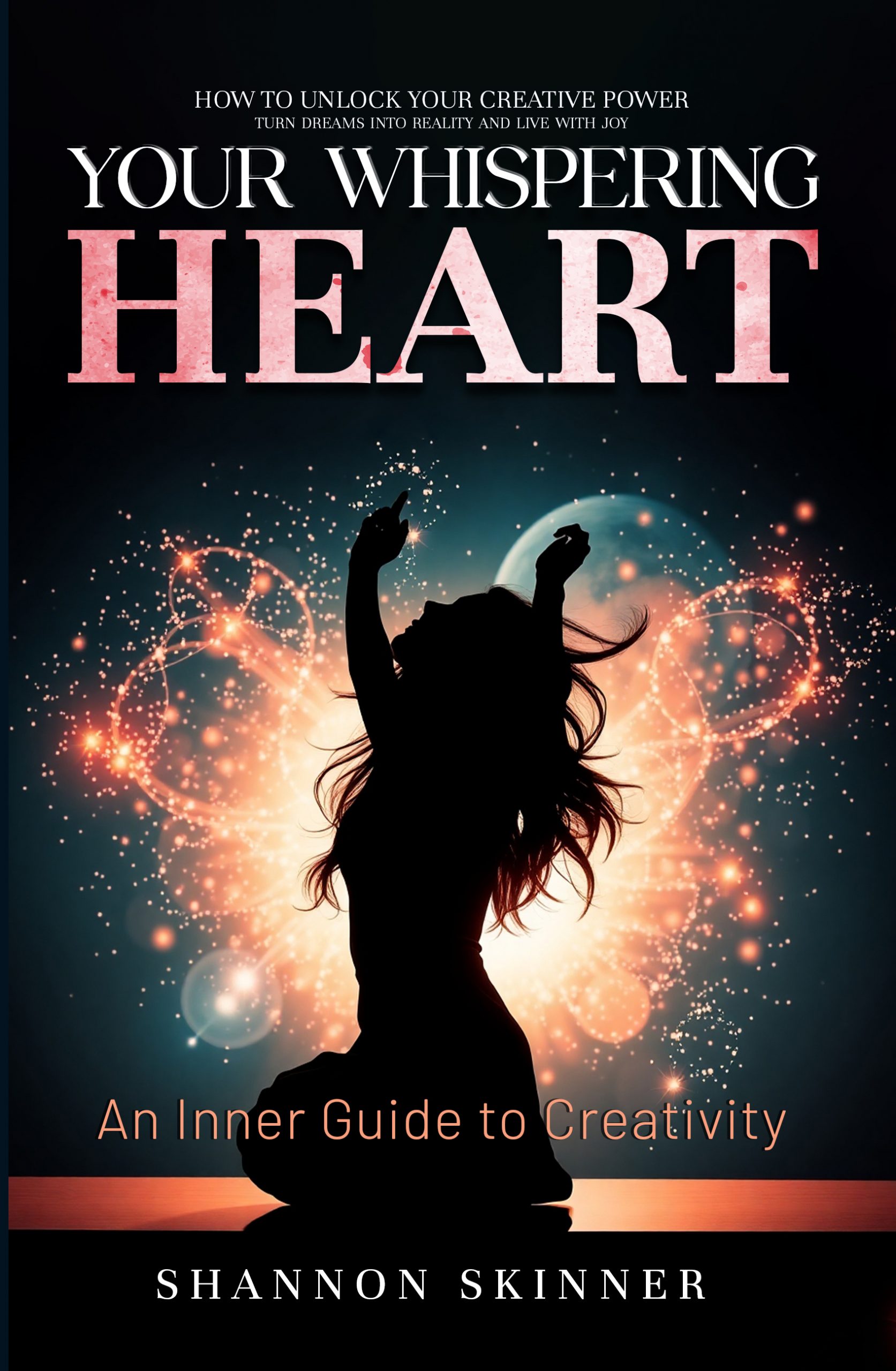We must do more to support Canadian artists
About 50,000 years ago, a creative explosion occurred in our human evolution when Homo sapiens suddenly developed new skills and forms of self-expression. They began painting, created music and designed musical instruments. They made decorative jewelry from ostrich eggshells, fashioned clothing and invented advanced tools. This “dawn of culture,” according to authors Richard Klein and Blake Edgar, is when humans began to display abstract thinking and develop culture and art, and is considered to be the most significant cultural event in human history.
Symbolic thinking – that is, thinking and communicating through abstract symbols — is the foundation of arts, music, language, mathematics and science.
(Art courtesy of Julie Himel)
Fast-forward to the 21st century, human beings have come a long way in our creative arts since decorating ostrich eggshells, and one thing is for certain: artists make our world a colourful and interesting place. Innately curious and inquisitive, artists create beautiful, dramatic, thoughtful forms of art that please and engage the human eye and ear, or get us to think — or move our bodies. Artists also play an important role in society because they document history in the making. Think of all the artifacts and works – ancient and modern — that are in museums and institutions around the globe.
And yet, given their importance, many artists — from painters to filmmakers to dancers to writers — are still today unable to survive economically from their art alone. Often times, they are asked, almost expected, to provide their talents or skills for next to nothing, or nothing at all. As Jenn Goodwin, Toronto-based dance artist and programmer for Scotiabank’s Nuit Blanche, put it: “You would not ask a plumber to give their services for free.”
As a nation, we do not support them enough.
Historically, artists have always had to rely on personal patrons, like a rich uncle. Today, we are fortunate in this country that our governments have become larger-scale patrons with their various funding and resources for arts and culture, but the arts is always vulnerable to cuts and economic down-turns. Fortunately, we do have a number of philanthropists who support the Canadian arts, such as The Honourable Margaret McCain, who I interviewed last season.
And so, this season, on my show Extraordinary Women TV, I wanted to bring out the stories of local independent artists, the challenges they face and how they get their support to continue doing their art. I wanted to play a role, albeit a small one in the bigger picture, in advocating for them.
So I went on-location over the summer to various art shows, such as the Toronto Outdoor Art Exhibition and Distillery District, and visited galleries. As I walked around with my cameraperson and spoke with these artists, I realized they are truly extraordinary — not because of status or financial wealth, but because it takes bravery to not only create art, but to share your art with the world. As Toronto-based artist, Karen Taylor, says: “As an artist, you feel naked and exposed.”
Artist Julie Himel, an award-winning Toronto painter and mother of a young child, has managed to find support to do her art full-time and balance it with having a family. On a personal level, during difficult times, she turned to her art as a means of healing, as so many artists do. Her work, which is nothing short of magnificent, can be found in public and private collections internationally. “If you keep your eye on beauty and simplicity, life can be a lot happier,” says Himel.
Abstract artist, Kate Taylor, works out of her studio home in Toronto and her art appears in private collections around the world. Blending art with business, she spearheads The Artists’ Network, an organization geared to helping and supporting visual artists create sustainable businesses and professions.
And so, if I have a take-away from filming this season’s show it is this: Toronto has many remarkable and talented artists, women and men, who make our city a colourful and interesting place. Their art has value — and so do they. My wish is to see many more Canadian businesses, and those with deep pockets and rich resources, taking a greater role in supporting independent artists. Surely today we are much more awake than we were at the dawn of culture 50,000 years ago. The stereotype of the “starving artist” should no longer linger in our collective consciousness.
Check out my coverage at the Toronto Art Exhibition on my YouTube Channel.
On the topic of creativity, check out my book, The Whispering Heart, Your Inner Guide to Creativity.
Creativity’s dirty little secret
I have a secret to tell you…
A dirty mind is great for creativity.
It has been long understood that creativity and sex are linked. Lovers often express their feelings and desires through creative forms, such as poetry, love letters and painting, regardless of whether it is amateur or masterful works.
 Think about the time when you first met your spouse, a new flame or the hot guy/girl you bumped into while on vacation. You probably had energy and passion that drove you wild, and you likely did double the amount of work you would ordinarily. Instead of taking two hours to churn out a report for your boss or client, it took you only one hour to hammer it out because you had other more, how shall I say, interesting things to do.
Think about the time when you first met your spouse, a new flame or the hot guy/girl you bumped into while on vacation. You probably had energy and passion that drove you wild, and you likely did double the amount of work you would ordinarily. Instead of taking two hours to churn out a report for your boss or client, it took you only one hour to hammer it out because you had other more, how shall I say, interesting things to do.
Sexual energy and creative energy are so strongly connected that they impact each other profoundly – this is pure biology, chemistry and physics in cahoots with one another. Sexual energy fuels inspiration and passion, and when harnessed and properly channeled is a pleasurable and powerful means to motivate us creatively.
I had once read that some professional athletes have been known to avoid sex at least 24 hours prior to competition, so they can harness their pent-up sexual energy for that important game. The ancient Greek athletes (originally only men were allowed to compete) were so serious about the Olympic championships they did not touch a woman, or another man, for at least one week prior to their game in order to keep the “inner flame” lit.
There are many well-known artists who have consciously embraced their sexuality and directed that energy toward creating their art masterpieces. Think of the artist Toulouse-Lautrec, who turned his sexuality into his now-famous classic portrayal of Parisian nightlife. Writer John Cheever is alleged to have believed sex improved his writing as well as his eyesight – talk about great insight.
In the business world, people who work together and are physically attracted to each other are usually more productive because there is a “charge” that fuels their creative energy. It can be an electrical experience reaping amazing results. Consider the number of television dramas and soap operas that are built on this dynamic. Chances are you probably know of someone who married a person they met while working together.
Here are some ideas on how you can harness your sexual energy to help channel it toward your creative dreams and ultimately get them off the ground:
1. Plan Romantic Nights Out with Your Mate: With some organization and planning, take your mate out on special occasions that enable you to become more intimate with one another, such as candlelight dinner or simply a walk on the beach. Above all, make it fun.
2. Enjoy Some Aphrodisiacs: In a recent study, scientists discovered a regular daily apple intake can boost sexual pleasure in healthy women. There are a number of other foods that are believed to help get you “in the mood,” such as oysters and chocolate. For naysayers, there is no harm in giving it a go, right?
3. Relax and De-Stress: We all know that too much stress is taxing on our health and productivity, but it can also impact our sexual energy and creativity. So find ways to de-stress. If at all possible, find ways to do this together with your mate, like couples yoga, where it can add to your intimacy.
4. Mind the Alcohol: Although a few drinks might remove inhibitions and get you in the mood, the name of the game here is to harness your sexual energy to become more creative and make that creative dream happen. Difficult to do with a hangover. So do not overdo it.
And so, experiment with your sexual energy and creativity, and determine what works best for you. You never know where that blend of these powerful forces will take your creative mind and talent.
(based on an excerpt from “The Whispering Heart: Your Inner Guide to Creativity,” by Shannon Skinner)
* photo courtesy of cjhallman
How being present helps your creativity
When we are living in the moment, we can focus on what is important to us. When we are present, we are in our power. Though not always easy to achieve with our busy lives and brain noise that tends to interfere (research shows we have about 60,000 thoughts per day on average), being present helps us more inspired and creative. Taking it a step further, creation happens in the present.
The ability to be present begins with awareness.
 There is a tendency for the human mind to travel into the past or future, rather than staying in the present. The direction — past or future — depends on if one is in fear that something negative will happen in the future, or is living a fantasy in the mind. Or traveling into the past where guilt and resentment call home; the place in the mind where we replay events that emotionally felt bad. Or, conversely, we want to hang on to a memory that felt good.
There is a tendency for the human mind to travel into the past or future, rather than staying in the present. The direction — past or future — depends on if one is in fear that something negative will happen in the future, or is living a fantasy in the mind. Or traveling into the past where guilt and resentment call home; the place in the mind where we replay events that emotionally felt bad. Or, conversely, we want to hang on to a memory that felt good.
I am reminded of my last trip to Paris, an amazing city that touched my heart. There I had two profound experiences that served as great reminders about the value of being present.
The first experience was have dinner with a friend “in the dark” in a restaurant (Dans le Noir) that gives people an experience of what it is like to be blind. After the initial anxiety of not being able to see a thing waned, all my other senses were ignited — taste, smell, hearing, touch — and I became more present with my friend. It “opened my eyes,” because I had no idea how distracting our eyesight can be from being fully in the moment, with so much information being taken in visually at any given time.
Being present does not stop at relationships.
During my visit to the Louvre, I looking forward to enjoying the art of some of the greatest artists in history. However, my museum experience was ruined by the throngs of tourists armed with cameras who constantly captured images of everything. They were not being present and truly enjoying the art, but rather going into the future and securing their memories with digital media. But it opened my eyes and taught me this: it is best to be present during important events and life experiences “as we are experiencing them.” When we do, we can bloom and evolve, be more powerful than ever — and simply be more creative.
Here are 5 ways that you can stay present so your creativity will blossom.
1. Set your intention — prior to spending time with a friend, family member, or business associate, spend a minute reminding yourself to be present. Put it into your consciousness. Remind yourself that the person will feel cared about and you will get far more from the time with them.
2. Meditate — even if it is for a few minutes, meditation is a great way to clear brain noise and listen to the whisper of your heart. Walking is a superb meditation exercise for clearing the mind, as is yoga. Any form of meditation is ideal to do prior to working on a creative project, whether it is writing or painting, or other.
3. Relax — in those times when we are feeling nervous about being in someone’s company, the mind tends to travel into the future or past, depending on whether we are in fear or guilt. Just relax and strive to enjoy the moment. And this too shall pass…
4. Neutralize negative emotions — if you are feeling upset at someone or something, write down whatever is upsetting you and all the benefits to you for experiencing it. When we are negatively charged, our mind tends to fixate on it. Once we can rid of negative emotions, we can clear our minds and get on with it.
5. Breathe — remind yourself that all you have is the breath you are taking right now. Nothing beyond that is a guarantee. So breathe.
What do you do to stay present?
* photo courtesy of Gavin Spencer
My grandmother taught me creative expression is key to longevity
On a recent trip back to Alberta to visit family, I spent some quality time with my maternal grandmother, who thankfully fit me in her busy schedule between her social life and her creative activities that she does in her “adult living” home. At nearly 90 years of age, she is in relatively good physical condition with all the walking she does, has the spirit of a schoolgirl, and she still enjoys being productive.
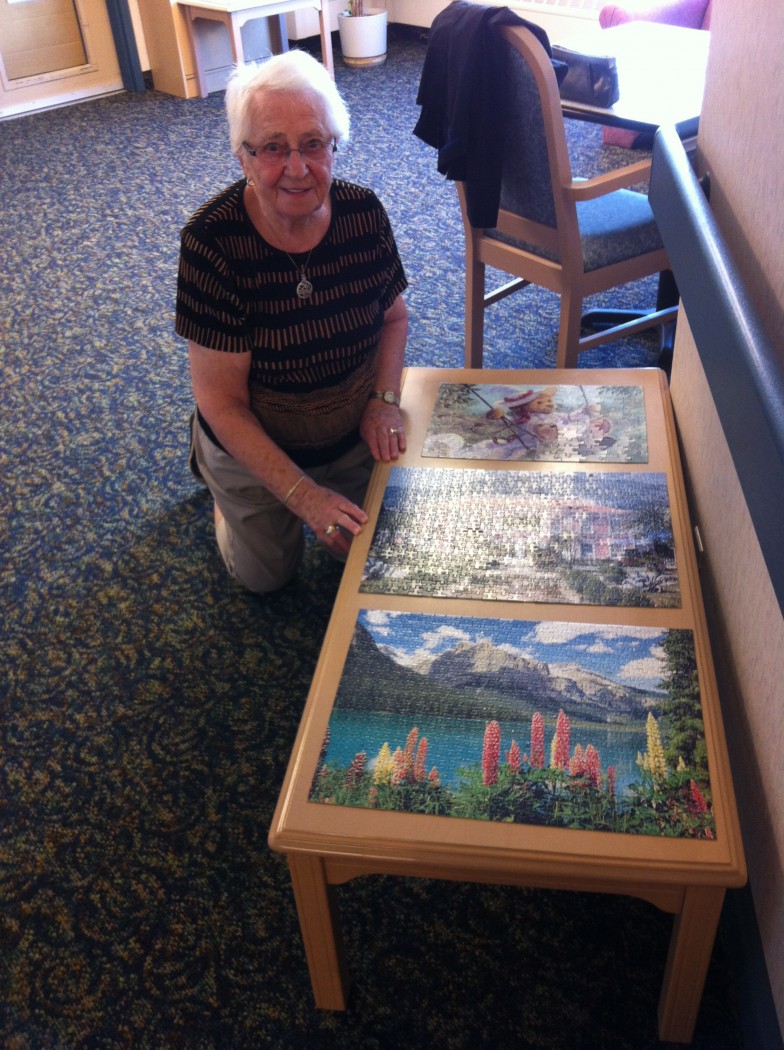 During our visit, my grandmother (a.k.a. Baba) proudly showed me the numerous picture puzzles she has been working on that are in various forms of completion, and told me of the other creative projects she works on with other women in the centre, such as making quilts. Though her eyes are not as sharp as they once were, she continues to crochet, needlepoint and knit – all creative forms of expression. She seems happy and content.
During our visit, my grandmother (a.k.a. Baba) proudly showed me the numerous picture puzzles she has been working on that are in various forms of completion, and told me of the other creative projects she works on with other women in the centre, such as making quilts. Though her eyes are not as sharp as they once were, she continues to crochet, needlepoint and knit – all creative forms of expression. She seems happy and content.
So I asked myself if my grandmother’s ongoing creativity is somehow connected to her longevity and overall happiness, and if there is a kernel of wisdom in that knowledge for me.
And voila! Based on a recent German study that “links creating visual art and improved functioning of the brain,” I may have my answer.
I believe we are here on planet Earth for a life of self-expression, and the form of that expression is unique to each individual. Creative expression is at the core of our life’s purpose, and is whatever gives us joy and meaning every day, whether it is being a healer, entrepreneur, parent or artist.
“The purpose of our lives is to give birth to the best which is in us.” ~ Marianne Williamson
For several decades, my grandmother played the nurturing role of a mother to two daughters, and hands-on grandmother to six grandchildren, and nine great-grandchildren — and now one great-great-grandchild. As well as wife to a first husband who was physically disabled and, after being widowed for several years, re-married to a husband who, in his twilight years, had his own health issues prior to his death.
Today, with freedom from those caregiver obligations, grandma enjoys spending time with her friend and working on her visual creative projects. These are the things that give her joy. And admittedly while doing picture puzzles and the crafts of quilt making, crocheting and needlepoint work may not be ‘high art,’ the creative process remains the same.
Since I do not have a crystal ball, I do not know what is in the cards for me as I move into the next few decades of my life. But what I do know is that, when I reach the age of 90, I hope that I will live it with the health, spirit and creative expression of my grandmother. Because at 90, she continues to ‘birth the best that is in her.’ And I believe her continued creation of her “visual art” is one of the keys to that.
Canada Day is not all “red and white”
This Canada Day has given me more than a reason to pause and celebrate. With all the waving of “red and white,” it reminds me of how “colour” impacts our daily lives. When we can start to see and experience the world in colour, we are able to unleash our creativity — and be more productive in business.
 For centuries, long before Canada was born, different cultures have been experimenting with colour, including the ancient Egyptians, Chinese, Aztecs and Greeks. From clothing to architecture to spiritual healing to scientific studies, colour has played an important role in our culture.
For centuries, long before Canada was born, different cultures have been experimenting with colour, including the ancient Egyptians, Chinese, Aztecs and Greeks. From clothing to architecture to spiritual healing to scientific studies, colour has played an important role in our culture.
In honour of Canada Day, let’s take a look at the colour red and its impact on our culture.
Historically, obtaining pure bright colours from dyes, which came from natural sources, was extremely labour intensive. Then came along technology, which enabled early society to process a bright red colour — and red became civilization’s symbol of power.
In medieval times, people of power, such as the nobility, judges and executioners, wore red robes or coats. Later, armies used red for uniforms; today, the RCMP dons red. Red has been used in the political arena (e.g. a symbol of communism and socialism) and many countries, like Canada, use it in their national identity. Many corporations use red in their logos for impact and recognition. Products are draped with red packaging to stand out. Red is used to warn us of danger on the roads, yet is also fashionable for sports cars. Red is the colour of blood. “Infrared” radiation is used as a healing tool in medicine.
Colour has a vital impact on our moods, well-being and productivity. The human eye can see a wide-range of colours, with some colours or various combinations bringing about profound reactions. Certain colours can be eyesores (bright yellow). Others are soothing (baby pink), or can minimize fatigue (pastel blue), and promote balancing and healing (green, blue). Some are depressing (black, grey).
Everything on earth is made of electromagnetic energy vibrating at different frequencies that correspond to sound, light and colour. We view our reality through sound, light and colour frequencies. Colour is light made of different frequencies and wavelengths; each colour has its own frequency and wavelength (the primary colours are what we know as the “rainbow” spectrum).
The colours we use in our workplace and home environments create ambiance, and impacts mood and creative energy. Colours can be used in a variety of combinations to get different effects. For instance, many hospitals choose pink or blue or white for the walls to get a particular effect. Corporations often use boring or dull colours like grey.
As for your wardrobe, the colours you choose to wear may enhance or depress your creativity. The colours you wear send signals to others around you and each colour is associated with different personality characteristics. To feel cheerful, wear yellow. If you want to feel sophisticated and powerful, wear black, a colour traditionally worn by artists. Red is energizing, passionate, courageous and often reserved for extroverts (think “power colour”). Pink is soft and approachable. Indigo is inspiring and traditional. Blue is honest, logical and calming. Orange is sporty and outgoing; it can also stimulate creativity. Brown is conservative and earthy. White is pure and neutral.
Even the colour of food can impact our daily lives. Think of all the health benefits from eating a plate of colourful veggies.
Without a doubt, we live in a world where colour dominates our lives, from seeing traffic signs, to weather patterns in the sky, to identifying food, to identifying people of different races – and nations.
So this Canada Day, while you are celebrating and waving “red and white,” use it as a means to spark your creativity by seeing and experiencing how colour around you impacts you. Start to see this world in colour and your creativity will bloom.
Did you know…
According to scientists at John Hopkins University, the colour of the Universe is beige.
Based on an excerpt from The Whispering Heart: Your Inner Guide to Creativity.
Shannon Skinner is the executive producer/host of Extraordinary Women TV, speaker, consultant, and author of The Whispering Heart: Your Inner Guide to Creativity. She writes and speaks around the world on unleashing creativity to live the life you desire.
How to push your ideas to the max
Some years ago, I read an article that quoted an advertising guru who said: “An idea has no value unless you do something with it.” Although I no longer recall the name of the adman, I have never forgotten his words. In a way, they began to transform my life.
The “land of ideas” is a place I have come to love and feel great comfort. Though recently, a dear friend of mine called it my perpetual state of “idea euphoria,” which I suppose is, em, a polite way of saying my head is constantly in the clouds. Guilty. I live in an ideas world, and made a living for years by creating and selling ideas. What I have learned, though, is that ideas can remain scribbled on paper, in our computers, or tucked away in our brains forever. While there is value in having gone through the creative process to dream-up an idea (the creative process is a journey), there is even more value when our ideas become something real under the sun.
All too often when we dream-up concepts we stop at the first solution, but if we keep going and exhaust all possibilities, we never know where it will take us. How far could you push an idea – let’s say for a business or creative project — and exhaust all possibilities and make it bigger than big?
For me, I knew I wanted to tell inspiring success stories of women to inspire other women to follow their dreams. The idea simply began with “how do I harness my skills to help women tell these stories,” which eventually lead to the creation of my television series, Extraordinary Women TV.
If you are looking to push your ideas to the max, here are some ways to help you along:
- Get Different Angles: Take an idea and look at it from every possible angle. Flip it upside-down, turn it inside-out. Get several different angles on an idea. The way to do this is to examine the idea based on a variety of perspectives.
- Map Out Your Vision: I like “mind mapping” to explore concepts, and plan and prepare presentations and speeches. This method is a brilliant visual way of developing ideas. Visually “map out” your idea or vision on paper to expand and explore your vision, and you will make wonderful connections. The possibilities for our ideas are infinite.
- Brainstorm: The quintessential adman and pioneer of brainstorming, Alex Osborne, once said: “It’s easier to tone down a wild idea than to think up a new one.” Brainstorming is an effective and efficient way to generate ideas and further develop existing ones. Do not let your ideas live alone in your mind. Toss around ideas with friends, family members or colleagues in a “power think tank.” See how your ideas grow…and how quickly.
- Get Into The Head of Someone You Admire: It may sound corny, but use your imagination to jump into the head of a mentor, role model or anyone else you admire. Look at your idea through their point of view. What would they say about it?
- Technology as a Creative Tool: Love it or not, we live in a wired, technological world and technology itself can be used as a creative tool. Digital pianos, cameras and computers are all advanced technological tools used for creative purposes. Graphic designers, animators, writers, publishers, filmmakers, marketers and photographers all rely on technology. I wrote this article using technology. Technology can also be used to explore and expand creative thinking. The Internet is an enormously powerful and fast means of exploring and doing research. Look into the various software programs available to help generate and develop ideas. Depending on your interests and needs, there are a range of programs on the market to assist with virtually anything creative.
- Discover Quick Ways to Generate New Ideas: If you need to start from scratch, here are a few ways to quickly generate new ideas.
8 Quick ways of dreaming-up new ideas:
- Gather ideas from real-life stories by reading newspapers, magazines and blogs, and watching the news.
- Think of two or three people in your life and link them in unusual ways to create fictional stories or come up with What If scenarios.
- Read a classic novel and turn it into a modern story, either literature, film or radio; a story that is relevant for today’s audiences.
- Write down the dreams you have while sleeping – good and bad – explore and expand them.
- Look at your own life with a fresh new twist, one that inspires you.
- Think of a big lesson you had in life. Expand on it. Look at it from various perspectives. What is the moral of the story? What can others learn from it?
- See the world through the eyes of a child and develop your ideas from that vantage point.
- Recall your “firsts” in your adolescent years, like the first time you drove a car, got a job, made love, travelled alone, got a “pad” with a roommate.
A highly creative mind maximizes all the possibilities for ideas. By pushing the boundaries of our minds our ideas grows. Whether our ideas take off or flame out, consider it a valuable learning experience. When we push our ideas to the max, just by engaging in the creative process itself, our wings lift us up and take us to places we have never been. And we learn about ourselves along the way.
Modified excerpt from Shannon Skinner’s book, “The Whispering Heart: Your Inner Guide to Creativity.”
Shannon Skinner is an author, speaker and the host and producer of “Extraordinary Women TV.”
copyright Shannon Skinner 2013. All rights reserved. Copying or distribution in any way strictly prohibited.
10 money savers to fund your creative dream
Do you have a desire to change your career or start a business, or do something else that speaks to your heart, but the fear of how you will pay bills while you make the transition stops you in your tracks? This is something I have experienced and has probably been the biggest obstacle for me to fulfill all of my dreams. That fear about whether or not money will come in the door can be all-consuming and, worst, block us creatively. We start doubting ourselves and begin questioning the value of our dreams. Or, we outright quit pursuing our dreams because we do not believe they can, or ever will, pay the bills.
I’ve been there more than I’d like. But, after years of trial and error, failure and success, I have come to realize that an empowering way of living our lives is by getting paid to do what we love. It may seem obvious, but it is really one of the keys to having a fulfilled life.
A shift began to happen for me when I started to look at money as simply an “energy system.” Energy flows where attention goes. Whatever you put your energy into, it will return a reward. If you believe in yourself, you can find a way to earn a living from your creativity. At the end of the day, we have to pay bills. At least if we enjoy earning a living by doing something we love to do, it takes the focus off “gotta pay the bills” to something more inspiring – like living a full life.
So if you need to save more money to make a career transition or get your creative project off the ground,or complete it, try these money saving ideas:
10 money savers to fund your creative dreams:
- Make money by using your talents in a variety of ways. Explore every possible means of earning a living by what you love to do and what you are good at. There may be areas you have not even thought of or yet discovered that could be lucrative.
- Sell assets. Even if it is just to tide you over until you earn a living doing what you love. You might need to inject some cash to kick start your dream; so if you have assets, now might be the time to take advantage of it and then build up your assets again once you are in a position to do so.
- Rent an apartment or house. Home ownership is costly and you might be able to save money by renting a place. If you have a property and decide to sell it, be sure to invest the money to make more money. Depending on where you live and your lifestyle, the case may be the opposite, where you might want to buy instead of renting.
- Make lifestyle changes. Even if it is a minor adjustment, it might be what you need to let go of old ways of thinking and habits that no longer serve you, enabling you to move forward in a new direction. Sometimes a complete lifestyle change or paradigm shift is required.
- Shop at dollar stores. This is especially important for materials such as stationary supplies, as well as basic household items. Even if you are saving a few dollars here and there, it is still saving money you would otherwise be spending on the same items elsewhere.
- Check-out community centres for free courses. You might discover all sorts of fun and interesting courses you can take at your local community centre that are free-of-charge, if you seek them out.
- Watch for junk mail special offers. Pay attention to junk mail and e-mails offering specials. You would be surprised what you can save by taking notice of that annoying junk you get.
- Start a creative dream bank account. For every paycheque you get automatically put a portion of it, even if it’s 10 per cent, into a “creative dream” bank account or mutual fund, or some other investment. Watch it build up as you dream about what you can do with the earnings at a future date, which will keep you inspired to save.
- Limit spending on meals and entertainment. I personally don’t believe a strict budget works, but if you pull back on areas that are not necessary or could be put on the back burner for a time when you are making money again doing what you love, it might be a wise accounting decision.
- Spend according to your values. If we spend our money on what’s most important to us, it serves us well. If you value education, then you can’t go wrong by investing in developing your mind and expanding your knowledge. If you value fashion, then it is important to you to look good, and that will impact how you feel and your energy
Modified excerpt from “The Whispering Heart: Your Inner Guide to Creativity,” by Shannon Skinner.
Shannon Skinner is an author, speaker, consultant and host/producer of Extraordinary Women TV.
© Shannon Skinner 2013. All rights reserved.
Inspired leadership: women who lead by example
When I was younger, I did not see myself as a leader, but I never saw myself as a follower, either. Rather, I marched to the beat of my own drum — as I still do today. Throughout my school years and early adulthood, I resented authority figures – those in a leadership capacity who would tell me what to do, or force their will on me — while at the same time secretly craved their guidance and wisdom.
In recent years, with some reasonable maturity under my, um, coloured hair, I have been studying some of the world’s greatest minds and leaders, and observing leadership around me; not because I was setting out to be a leader, moreso out of curiosity. I wanted to know what is true leadership? What makes a good leader? Is it power and influence? Running a large corporation and many employees? Making decisions that impact scores of people? Or is it something else? We usually think of leaders as those who have risen to the top in the business world and political arena, such as Steve Jobs (whose legacy lives on), President Obama, Marissa Mayer, Ontario’s Premier Wynne, and so forth. But these are not the only kind of leaders out there.
Today, I interview women on my talk show, Extraordinary Women TV, who are doing something interesting with their lives. They are role models. Having interviewed in-depth more than 200 Canadian women from all walks of life who are making their mark, it has forced me to revisit any previous notion I had of leadership.
For instance, Kym Geddes is the news director and anchor at NewsTalk 1010, who has her finger on the pulse of Toronto — an influential position to be in. She is the first female news director at the station, no doubt a huge accomplishment, but what I think is most interesting about her is the passion she oozes because she loves what she does. It’s like a magnet.
Linda Lundstrom, Canadian icon and fashion designer, had a highly successful design company only to later lose it all when the economy turned-down. Then, through a journey of faith, as she put it, she created a different kind of meaningful and successful life for herself, while at the same time making a difference in Aboriginal communities, which she speaks so passionately about today.
And Hassel Aviles, who founded the Toronto Underground Market (TUM), the first social food market in Canada, which brings many people together. As a young mom, she wanted to do something in her life that did not involve her children, so she faced her fears and launched TUM, something she loves to do – which makes her shine and that is alluring.
These women all have something in common: they are all leaders in their own right. They make their dreams come true. They inspire me. And they have opened my eyes to seeing a different kind of leadership because, as role models, they are leading by example.
Whenever I give my keynote on the topic “unleashing creativity,” I talk about discovering what we truly want to create in our hearts, getting beyond self-doubt – the killer of creativity – finding inspiration, which fuels us, and the courage that gives us the, ahem, balls to make our creative dreams a reality. When we do this, we are following our hearts and dreams. When we follow our dreams, we become an inspiring person. When we become an inspiring person, we inspire others to do the same — it’s catchy!
Because let me ask you this: is there nothing more inspiring than someone who is following their heart and dream?
This is leading with inspiration, through inspiration, for the purpose of inspiration. It is inspired leadership. And it is all around us.
And so, today I challenge you to think about how you view leadership and maybe even redefine it, if necessary.
And if you ever hit a wall with your creativity (a creative crash), experience the doldrums, or need inspiration or a courage boost, I encourage you to check out the women I interview. Get inspired by their stories of courage and transformation, and that will surely get you fired-up and make you take steps toward fulfilling your own dreams. They are truly leading…by example.
Shannon speaks at Women in Business Luncheon (VIDEO)
I was recently the keynote speaker at the Women in Business Luncheon honouring International Women’s Week, hosted by the Newmarket Chamber of Commerce and sponsored by RBC.
The event was livestreamed by CanadaOne.com. Here is a video of my talk about “Unleashing Creativity.”
Glasgow, a city of fine art
When you think of Glasgow, art may not be the first thing that comes to mind. On a recent trip to Scotland’s second largest city, my discovery of a vast collection of world-class fine art was not only a pleasant surprise, it is revealing of this city’s cultural soul. Glasgow boasts more than 20 art museums and galleries, many of which the whole family can enjoy. Best of all, a number of them are free to the public.
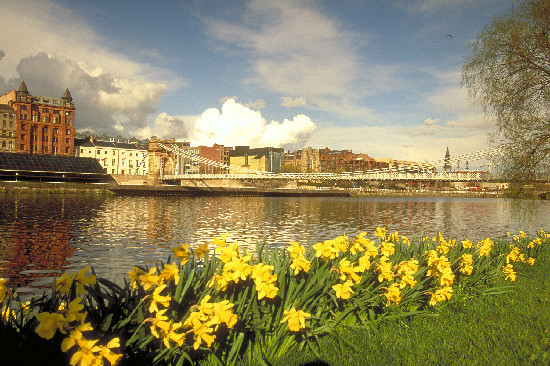
After all, Glasgow was the home of architect and designer, Charles Rennie Macinstosh, one of the most creative designers at the turn of the previous century. It was also home to the famous Glasgow Boys and Glasgow Girls, who were a group of leading Scottish artists known for their early work in impressionism. These are only a sampling.
If you are planning a trip to Glasgow, here some of the art museums not to be missed:
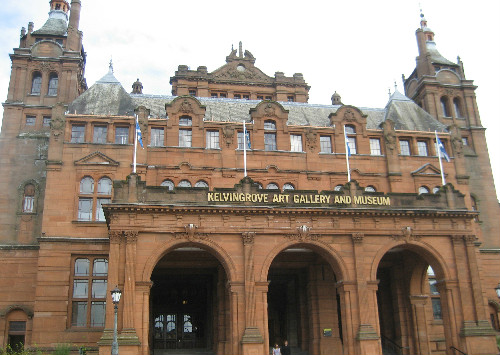
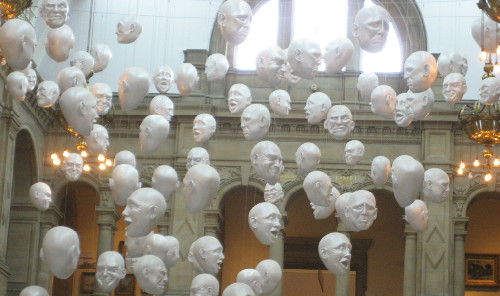
Also on permanent display is The Mackintosh House, an impressive recreation of the original home and furnishings of Charles Rennie Macintosh and his wife, Margaret MacDonald Macintosh, a remarkable artist in her own right, where the couple had lived in the early 1900s. Macintosh took what was an old Victorian home and modernized it, being one of the first designers to paint dark wood furniture white, a complete departure from the traditional dark.
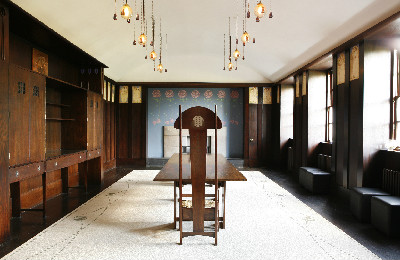
(example of Macintosh-designed furniture; House of an Art Lover)
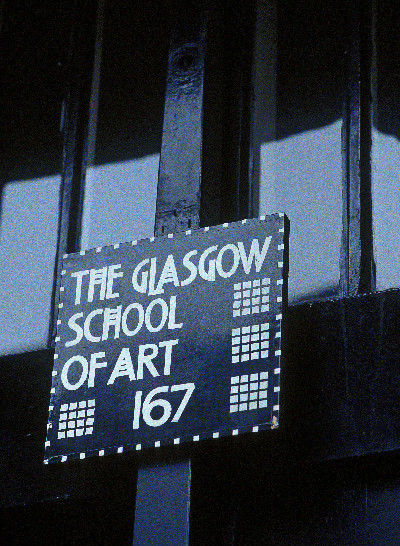

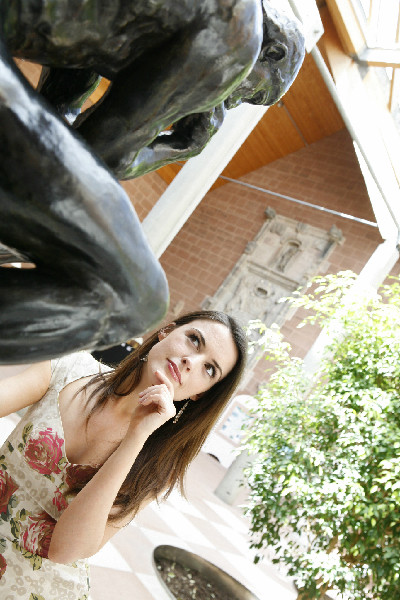
(Rodin’s “The Thinker” sculpture at the Burrell)
The Burrell Collection offers one of the largest private art collections in the world. Gifted to the city of Glasgow by Scottish shipping magnate, Sir William Burrell, in 1944, it is located on a lovely, sprawling, woodland property outside the city. Access may not be as easy as the more central galleries, but well worth the effort. Displays comprise a wide-range of art from important French artists such as Rodin, Degas, Cézanne and Boudin, to late medieval art, Chinese and Islamic art, and more. Of particular interest is the exhibition, Jean-Francois Millet: Under Investigation, a collection of 11 works by French artist Jean-Francois Millet that is currently “under investigation” by a team of experts to determine if the artist is actually Millet. The Burrell regularly holds temporary exhibitions, and events and activities for adults and children. Admission is free.
Photos of the River Clyde, Glasgow School of Art, Macintosh furniture, Burrell courtesy VisitBritain
Shannon Skinner is the author of The Whispering Heart: Your Inner Guide to Creativity, and creator and host of Extraordinary Women TV with Shannon Skinner. Travel and exploring the world is her greatest inspiration.

